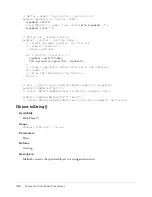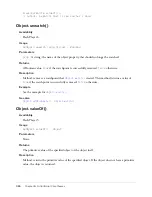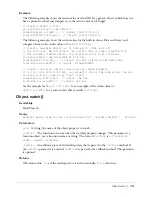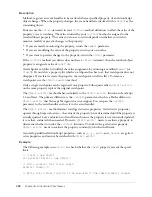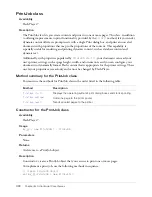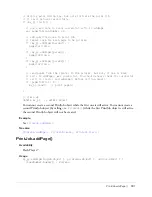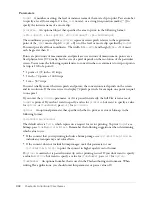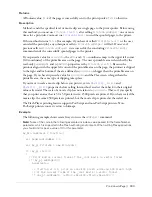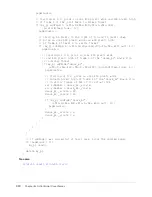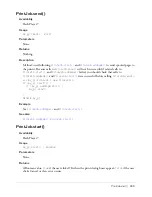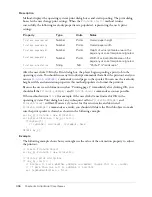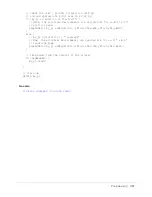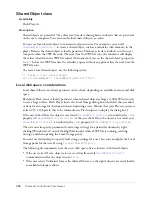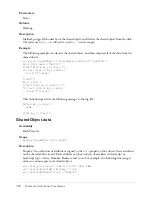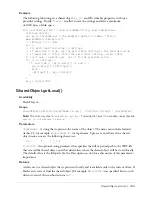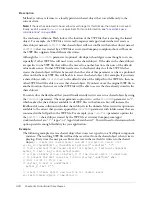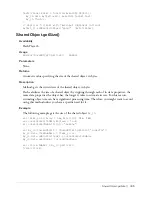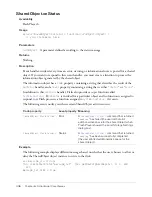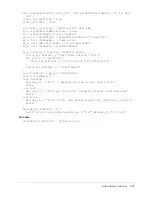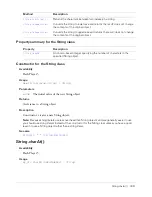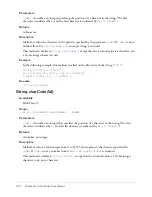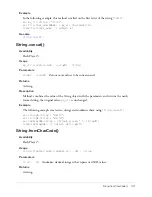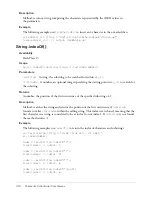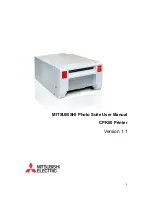
398
Chapter 6: ActionScript Core Classes
SharedObject class
Availability
Flash Player 6.
Description
Shared objects are powerful: They offer real-time data sharing between objects that are persistent
on the user’s computer. You can consider local shared objects as
cookies
.
You can use local shared objects to maintain local persistence. For example, you can call
SharedObject.getLocal()
to create a shared object, such as a calculator with memory, in the
player. Because the shared object is locally persistent, Flash saves its data attributes on the user’s
computer when the SWF file ends. The next time the SWF file runs, the calculator will display
the values it had when the SWF file ended. Alternatively, if you set the shared object’s properties
to
null
before the SWF file ends, the calculator opens without any prior values the next time the
SWF file runs.
To create a local shared object, use the following syntax:
// Create a local shared object
var so:SharedObject = SharedObject.getLocal("foo");
Local disk space considerations
Local shared objects are always persistent on the client, depending on available memory and disk
space.
By default, Flash can save locally persistent remote shared objects as large as 100K. When you try
to save a larger object, Flash Player shows the Local Storage dialog box, which lets the user allow
or deny local storage for the domain that is requesting access. (Ensure that your Flex screen size is
at least 215 x 138 pixels; this is the minimum size Flash requires to display the dialog box.)
If the user clicks Allow, the object is saved and
SharedObject.onStatus
is invoked with a
code
property of
SharedObject.Flush.Success
; if the user clicks Deny, the object is not saved and
SharedObject.onStatus
is invoked with a
code
property of
SharedObject.Flush.Failed
.
The user can also specify permanent local storage settings for a particular domain by right-
clicking (Windows) or Control-clicking (Macintosh) while a SWF file is running, selecting
Settings, and then opening the Local Storage panel.
You can’t use ActionScript to specify local storage settings for a user, but you can display the Local
Storage panel for the user by using
System.showSettings(1)
.
The following list summarizes how the user’s disk space choices interact with shared objects:
•
If the user selects Never, objects are not saved locally and all
SharedObject.flush()
commands issued for the object return
false
.
•
If the user selects Unlimited (moves the slider all the way to the right), objects are saved locally,
as available disk space allows.
CHAPTER 6
ActionScript Core Classes
Summary of Contents for FLEX-FLEX ACTIONSCRIPT LANGUAGE
Page 1: ...Flex ActionScript Language Reference...
Page 8: ......
Page 66: ...66 Chapter 2 Creating Custom Classes with ActionScript 2 0...
Page 76: ......
Page 133: ...break 133 See also for for in do while while switch case continue throw try catch finally...
Page 135: ...case 135 See also break default strict equality switch...
Page 146: ...146 Chapter 5 ActionScript Core Language Elements See also break continue while...
Page 808: ...808 Chapter 7 ActionScript for Flash...
Page 810: ...810 Appendix A Deprecated Flash 4 operators...
Page 815: ...Other keys 815 Num Lock 144 186 187 _ 189 191 192 219 220 221 222 Key Key code...
Page 816: ...816 Appendix B Keyboard Keys and Key Code Values...
Page 822: ...822 Index...

